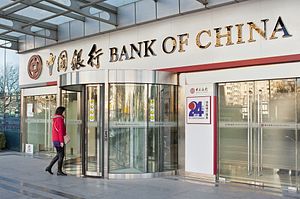A new report from one of China’s top universities found that wealth and income inequality in the country is getting steadily worse. According to the report, one-third of the country’s wealth is owned by the top 1 percent of households, while the bottom 25 percent account for only 1 percent of wealth.
That data was revealed in a 2015 report from China Family Panel Studies, an annual survey aimed to shed light on the “wellbeing of the Chinese population.” The survey, launched in 2010, is conducted by the Institute of Social Science Survey at Peking University and funded by the Chinese government.
When introducing the report, Li Jianxin, a Peking University sociology professor who was the primary author, said the content could be roughly divided into two overarching themes: inequality within families and within society at large. Intra-family issues, Li said, related to questions like how property is distributed between husbands and wives, how children provide support for their elderly parents, and the support provided to families by migrant workers. Social inequality as captured by the report included not only wealth inequality but also unequal access to education and health insurance (resulting in “health inequality”).
Many of these issues are interconnected. Social problems stemming from migrant workers making a living far from their families are a direct consequence of the regional and rural/urban income gap. The rural/urban income gap also feeds back into education and health inequality. Meanwhile, the need for children to support their elderly parents is a consequence of the fact that the national and local government support is far from enough to meet seniors’ needs, and social services are not widely available.
China’s social inequality has exploded since the country embarked on its “reform and opening up” process in 1979. In 1980, China’s Gini coefficient (a measure of inequality) stood at 0.3, according to People’s Daily; in 2012, it was at 0.49. The Gini coefficient measures inequality on a scale of 0 (perfectly equal) to 1 (perfectly unequal); any country with a Gini coefficient over 0.5 is considered highly unequal. A coefficient of 0.4 is generally considered to be a warning level. For comparison, the most recent World Bank estimates for the Gini coefficients of the world’s other top economies — the United States, Japan, and Germany — were 0.41, 0.32, and 0.3, respectively.
Inequality has long been a serious concern for China’s leaders. As People’s Daily put it in its summary of the report, “These inequalities are growing steadily. If they cannot be effectively solved, they may very likely threaten social stability and thus become a bottleneck in future social development.”
For China’s government, social inequality is worrying because of the potential threat it poses to social stability – particularly in a country whose government remains nominally communist. A survey by People’s Daily before the National People’s Congress in 2015 listed wealth inequality as the top issue China’s people wanted their government to tackle. Meanwhile, treating the symptoms of wealth inequality – insuring equal access to education as well as providing universal health insurances and pensions for the elderly – dominated Chinese netizens’ wishlist for the 13th Five Year Plan, according to an online survey by Xinhua.
However, the income gap is also reflected in social attitudes, which the Peking University report found were increasingly stratified. That is to say, there’s a mental gap between China’s “haves” and “have-nots” when it comes to evaluating how the country (and its leaders) are doing. Concern over inequality in China has spawned caustic suggestions that the country belongs only to an elite few – the “Zhao family” in Chinese internet slang. But, predictably, those who are experiencing financial success are far less cognizant of the wealth gap.
In fact, the Peking University report suggested that China’s middle class has the potential to serve as “social stabilizers,” because they tend to have more positive outlooks on the wealth gap, more confidence in party cadres, and more upbeat evaluations of government performance.

































